A discussion about the crusades without any mention of Saladin? arguably one of the best military minds and respected figures (in both the Islamic and Christian worlds) during any of the 8 crusades.
Results 21 to 30 of 40
-
07-15-2012, 01:26 PM #21
 Re: The Medieval Crusades 1095-1291 - Events, Life, Society, Warfare, Innovations
Re: The Medieval Crusades 1095-1291 - Events, Life, Society, Warfare, Innovations
-
07-15-2012, 01:39 PM #22Banned User

- Join Date
- May 2012
- Gender

- Posts
- 1,464
 Re: The Medieval Crusades 1095-1291 - Events, Life, Society, Warfare, Innovations
Re: The Medieval Crusades 1095-1291 - Events, Life, Society, Warfare, Innovations
@æRLO
No worries, I'll include Salahdin. I'm taking this thread bit by bit and still in the First Crusade. I got stuck reading about some minute details, I'm being blitzkrieg'd by so many things right now.
-
07-16-2012, 12:37 AM #23Banned User

- Join Date
- May 2012
- Gender

- Posts
- 1,464
 Re: People's Crusade (Peasants Crusade) and the Religious Uprising of 1096
Re: People's Crusade (Peasants Crusade) and the Religious Uprising of 1096
Pope Urban II's speech ignited a fiery wave of enthusiasm across Europe “Deus Vult!” (God wills it).Every where and every one, from lowly peasants to nobles wanted to take part in this 'crusade'. It was quickly assumed by religious leaders that participation of the recapture of the Holy Land enabled man to be absolved (free) of his sins, the people of higher positions saw an opportunity to get rid of troublesome and unwanted nobles and knights by redirecting their priorities on this honorable Christian undertaking while many others saw profit and opportunities in the East.
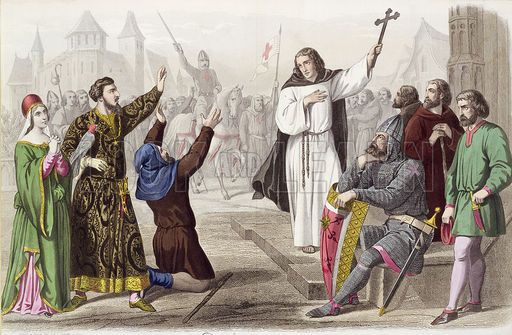
"It is the will of God!" To join the crusades was a 'noble Christian endeavor'.
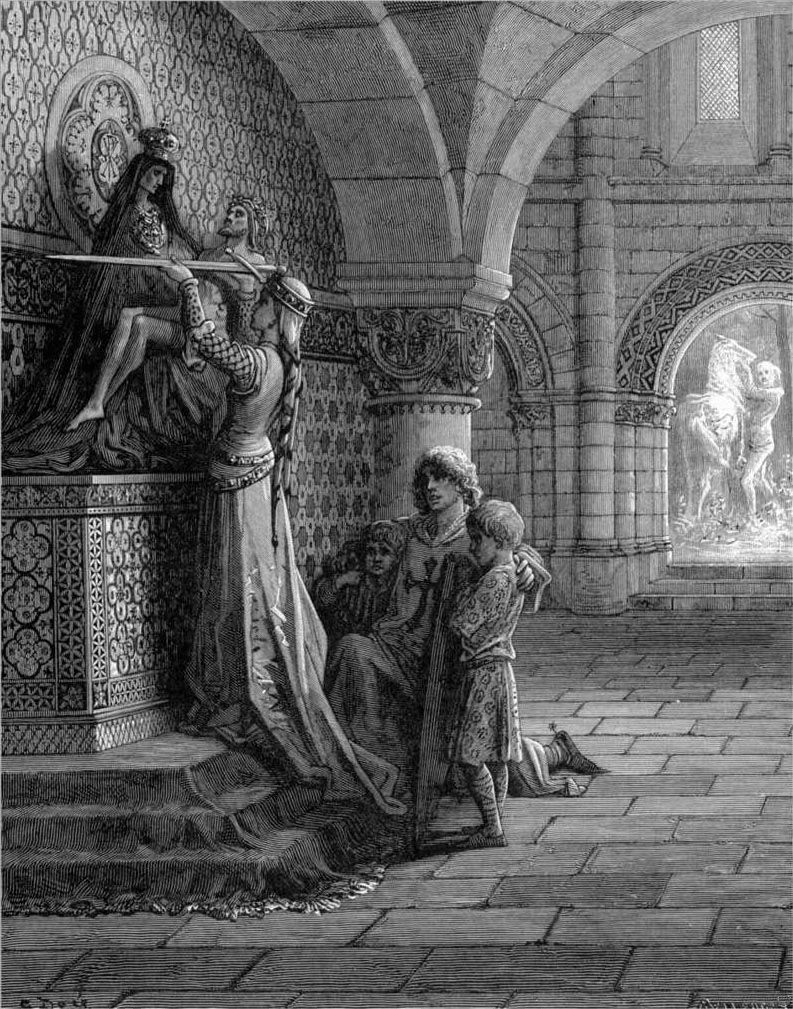
Father leaves his family to go crusading.
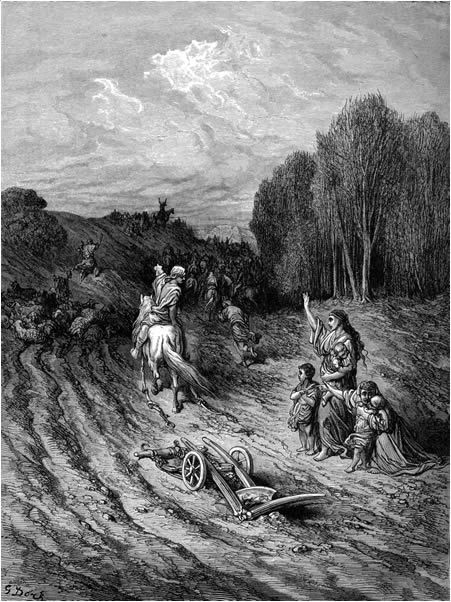
Peasants leaving their work and families to travel to places they have never heard before. Many of them will lay to rest there, many will not even reach the Holy Land.
Whatever the reasons were, and unlike popular opinions, this religious phenomena was usually taken with geniune devotion. In fact soldiers or men were not the only ones marching across Europe to the Middle East, among them included women and children as well, many dying on the way from hunger, disease, exposure and or from bandits. In a nutshell, the first wave of crusaders was an unusual army. It was a motley crue of unskilled soldiers, peasants, children, old men, and women who simply painted a red cross on their clothing 'bearing the cross of Christ'.
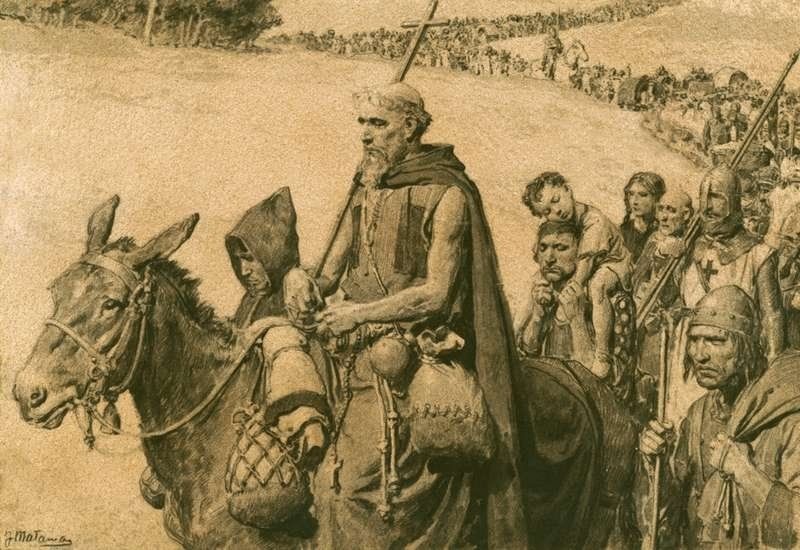
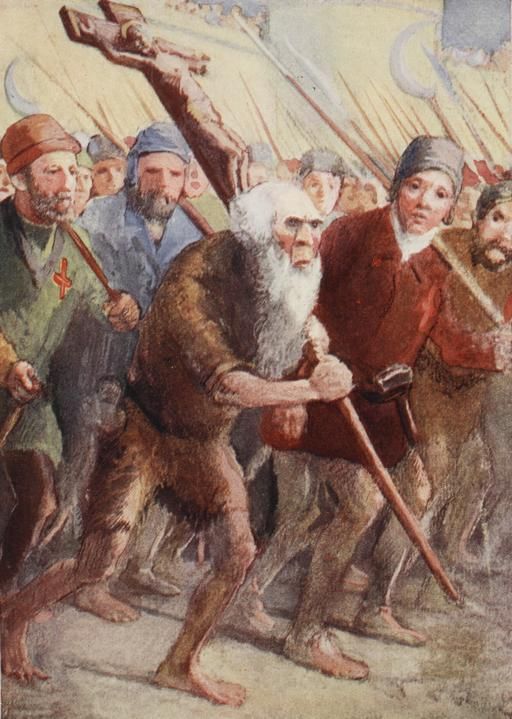
Because this first wave of crusaders were made up of lowly nobles and commoners this early event of the First Crusades was dubbed, the Peasants Crusades.
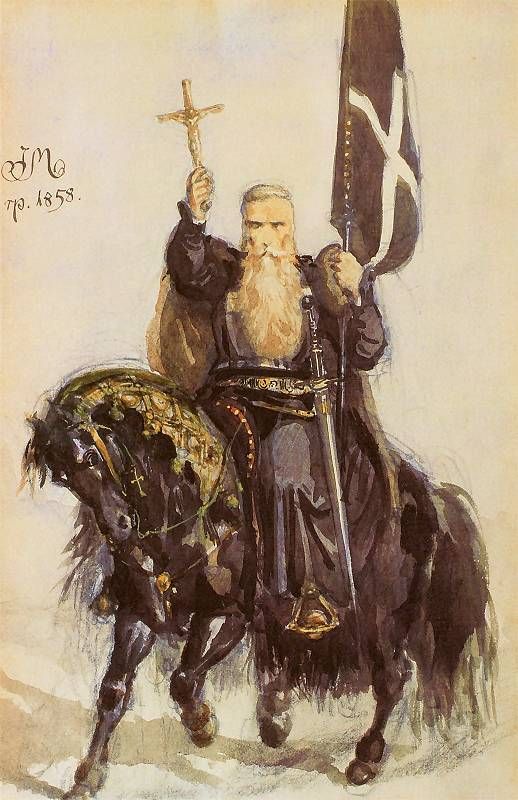
Upon arriving in Constantinople, the Byzantine emperor Alexius (the one who called for assistance from the pope) was stunned to see this army made up mostly of common people. He urged the charismatic commander-priest, Peter the Hermit and his lieutenant, a pious Frankish knight, Walter Sans-Avoir 'the Penniless' not to fight the Turks knowing they were outmatched. When a small batch of crusaders arrived however they began attacking the Turkish controlled areas with dire consequences...In 1096 Peter the Hermit, a native of Amiens in France, led 20,000 commoners out of Cologne on the Peasants' Crusade. Made up of poorly organized groups led by Peter the Hermit and Walter the Pennyless, the Peasants' Crusade was not an official response to Constantinople's request for aid against the Muslims. It was, instead, a popular religious uprising.
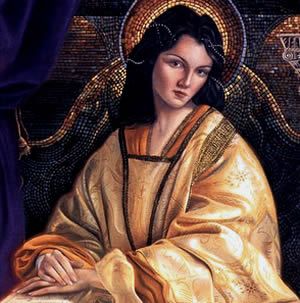
Princess Anna Komnene, scholarly daughter of the Byzantine emperor called Peter the Hermit KukuPeter or (Peter the Cuckoo) in her book the Alexiad. She describes KukuPeter among the first pilgrims to have been denied entry in the Holy Land and was tortured by the Turks. This Byzantine princess is said to be the first female historian who kept records and historical accounts of the Empire, the Crusades, and for her many accomplishments she was ambitious and was kind of a big deal. Her manipulative scheming later on the 'throne inheriting' linked her to a murderous plot. Much later in her life she lived in the seclusion of a monastery, studying history and philosophy until her death.
Peter the Hermit's crusaders are ambushed and massacred.
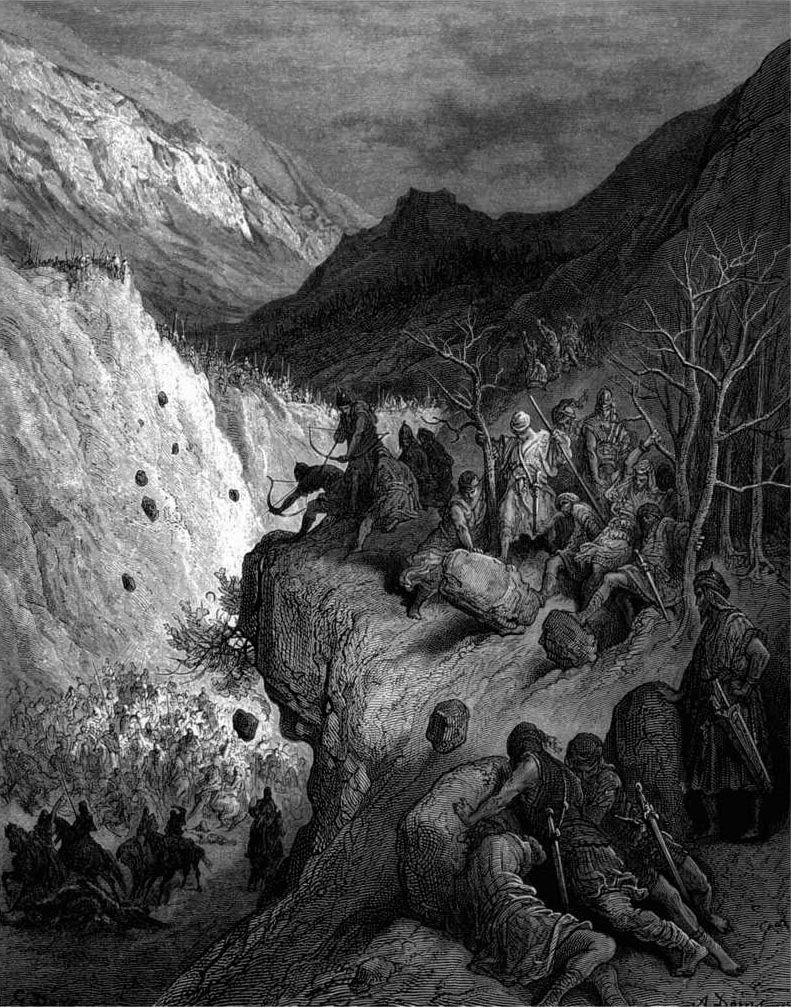
Three miles from the camp, where the road entered a narrow, wooded valley near the village of Dracon, the Turkish army was waiting. When approaching the valley, the crusaders marched noisily and were immediately subjected to a hail of arrows. Panic set in immediately and within minutes, the army was in full rout back to the camp. Most of the crusaders were slaughtered...The remainder of Peter's crusade was surprised near the village of Dracon by Kilij Arslan's army. They were easily defeated and around 30,000 men, women and children were killed.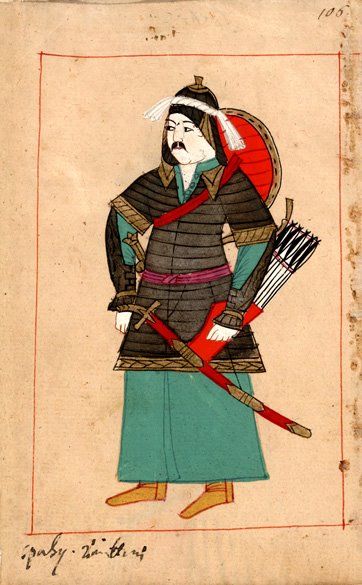
Seljuk commander Kilij Arslan.
While Peter the Hermit survived his pious lieutenant, Walter the Penniless was killed in action, shot with seven arrows.
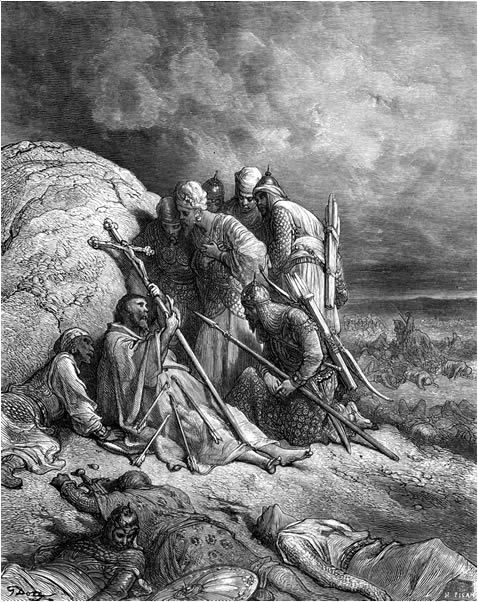
The Byzantines arrived later to help the survivors and bring them back to Constantinople thus ending the People's Crusade.
-
07-16-2012, 01:28 AM #24
 Re: The Medieval Crusades 1095-1291 - Events, Life, Society, Warfare, Innovations
Re: The Medieval Crusades 1095-1291 - Events, Life, Society, Warfare, Innovations
Nice collection of sceneries you got here TS, good job!
In the beginning were the Sassanids, this is were everything started. All attributes on how these conquests started must go back to the Sassanids.
History of Iran: Sassanid Empire
Next were the foundations of Muhammad, they were propelled not only by a desire for conquest but also by a new religion, Islam. The Prophet Mohammad, a member of the Hashimite clan of the powerful tribe of Quraysh, proclaimed his prophetic mission in Arabia in 612 and eventually won over the city of his birth, Mecca, to the new faith.
Third were the Beduin arabs led by Abu Bakr. Within one year of Muhammad's death in 632, Arabia itself was secure enough to allow his secular successor, Abu Bakr, the first caliph, to begin the campaign against the Byzantine and Sassanid Empires.
The Arabs were technologically inferior to both the Persians and the Byzantines in the beginning of this era, before advancement in arts, science, technologies, etc..
They had two advantages.... they were not exhausted by constant war and they were ruthless in battle, and were strategically determined to face one front at a time. They did not give their enemies a chance to recover and pushed on until they were stopped. They attacked Persia and Eastern Rome when both were at their weakest.
This was their golden age, and they really flourished with arts, sciences and technologies.
-
07-22-2012, 12:37 AM #25Banned User

- Join Date
- May 2012
- Gender

- Posts
- 1,464
 Re: Liberation (Siege) of Nicaea May-June 1097AD
Re: Liberation (Siege) of Nicaea May-June 1097AD
Continuation.
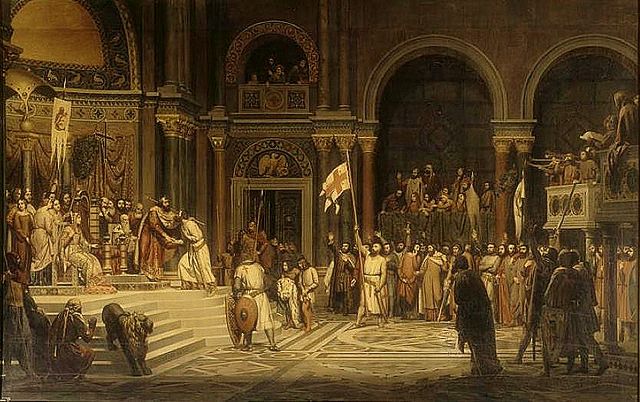
--Crusaders are welcomed by Emperor Alexios Komnenos I of Byzantium.--
After the defeat of the People's Crusade (see earlier post) at the hands of the Seljuk Turks a new batch of crusaders arrived in Constantinople. This was now the ‘official’ response of the Pope to the Byzantine Emperor Alexios’ letter.

--The Frankish Nobles who led the First Crusades--
These crusaders were led by Frankish nobles, Godfrey of Bouillon, Bohemond I, Tancred, Raymond IV of Toulouse, Robert II of Flanders and among them, Peter the Hermit and his peasant army, who survived the massacre during the People’s Crusade. The crusader size is recorded to be as large as a modern army division – around 34,000 including knights. They were backed by a small contingent of the Byzantine ‘navy’ under Manuel Boutoumites who put to charge around the ports in case the Muslims would manuever their way through there.
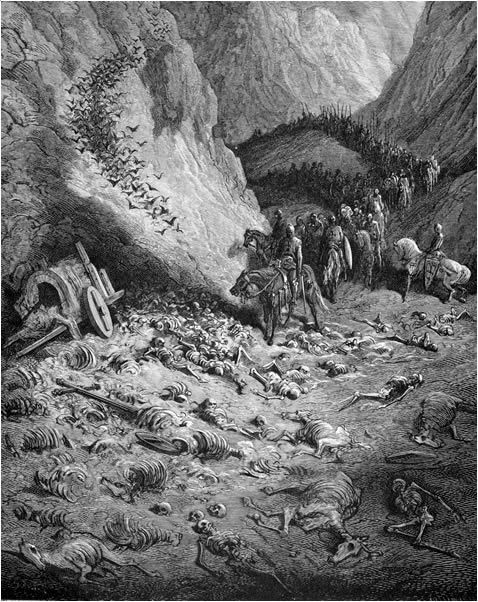
--The crusaders find the remains of Peter the Hermit and Walter the Penniless’ army during the People’s Crusade.--
In May 1097 the Crusaders arrived outside the Seljuk held city of Nicaea but was faced with a problem – they were starting to lack food. Because of this scarcity, a piece or a loaf of bread cost 20 to 30 denarii which is equivalent to one gold coin in ancient Rome. But Bohemond I, deviced his logistics planning for food to be brought not only by land but by sea as well and the result was a “great abundance of food for the whole army of Christ”.
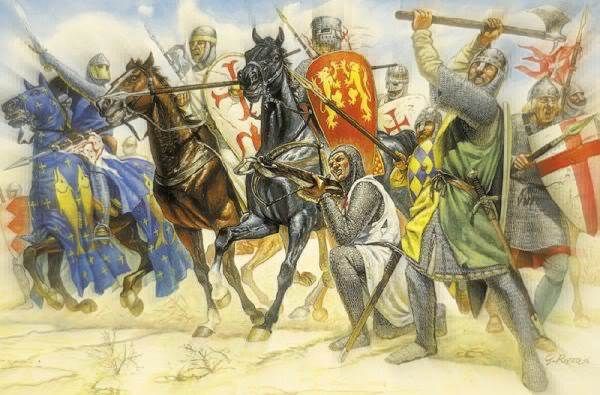
--They’re not the peasants Arslan and the Turks massacred a year earlier. To their surprise.--
On Easter Sunday 1097, the crusaders surrounded the Nicean city from all sides; it would appear that the Turkish defenders were not prepared to meet such as massive and co-ordinated force. The crusaders began constructing their war machines – siege equipment – to destroy the city walls while digging and mining underneath the city. During this time the defenders were already sending letters of aid requesting further assistance. The crusaders decided to concentrate most of their forces on the unprotected ‘middle gate’ while the rest met the Turks outside assigned to break the siege. It was a fruitless and even costly attempt by the Seljuks Turks under Kilij Arslan who later retreated after a long battle that lasted through the night, unable to stop Raymond IV and the bishop of Le Puy, Adhemar’s armies. When Raymond IV and Adhemar’s crusaders returned victorious, they threw the severed heads of the Turks far passed inside the city walls terrifying the Turkish defenders.
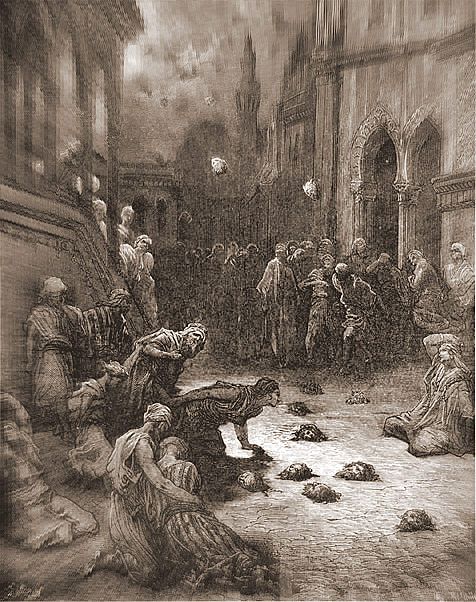
--Crusaders hurl severed heads of those who tried to break the siege back into the city terrifying its inhabitants.--
Meanwhile at the Black Sea, (the Lake) the Emperor’s navy, upon the request of the crusaders blocked supply routes to Nicaea. When the defenders saw that these ships were filled with Turks they were overjoyed only to find out that these were actually filled with Turcopoles – Turks who converted to Christianity – then it was said they began weeping and lamenting.
By June, with no hopes of supplies coming, the Turks surrendered to the Byzantine emperor who granted them safe passage to Constantinople at the disappointment of the crusaders seeing injustice in this secret affair for having fought there for seven weeks and three days with many dead. The emperor compensated for the brave actions of the crusaders offering them various gifts but this only fuel the bitter relationship between the crusaders and the Byzantines.
-
07-28-2012, 01:08 AM #26Banned User

- Join Date
- May 2012
- Gender

- Posts
- 1,464
 Ambush at Dorylaeum, July 1097
Ambush at Dorylaeum, July 1097
++ Continuation ++
After the liberation of Nicaea in June, the crusaders left the city with resentment for the Byzantines who they felt had betrayed them for their negotiations with the Turks. The Turks surrendered the city to Emperor Alexios I in exchange for safe passage without the crusaders knowing about it. After a long and bloody siege the crusaders discover that the city was already in Byzantine control.
By the end of June the massive crusader army continued to march to the Holy Land. In the meantime also they began to take notice at the Turkish horsemen observing them while in the wilderness. The crusaders take them for scouts and then it was pretty obvious that they Moslems were preparing for an assault of some sort and so it was decided that the nobles would take charge of their armies and divide likely to divert the Turks…
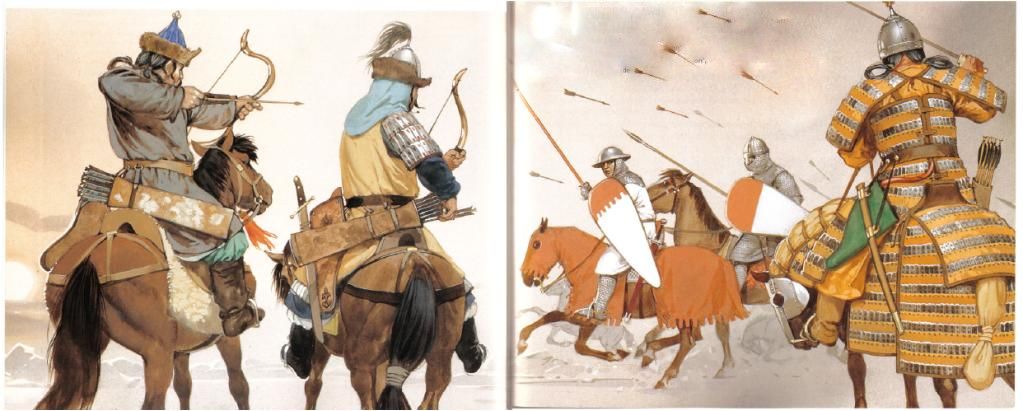
Turkish horse archers harass the crusaders with hit-and-run tactics. The crusaders who were usually heavy found it difficult to counter this type of fighting although their thicker armor compensate for this disadvantage.
This type of operation made the crusaders believe that a larger Turkish force was based near the mountains. A mixed army of Moslems began to conduct ‘guerilla’ warfare on the Christian force attacking in a ‘strange manner’ likely shooting arrows while on horseback and driving away. The crusaders camped near the ruins of the Dorylaeum, an ancient city.
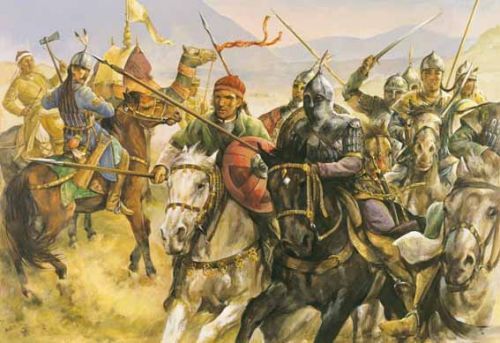
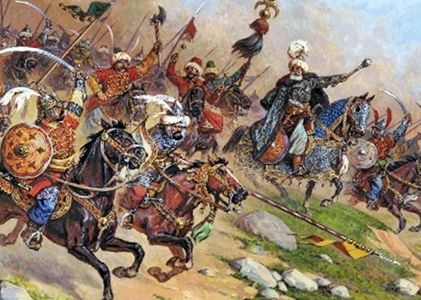
Turk cavalry charge the unprepared crusader camp early morning of July 1, 1097.
The Turkish force was once again led by Kilij Arslan and other Muslim nobles. They have surrounded Bohemond’s forces not knowing that the crusaders have previously divided themselves probably after observing the Turks preparing to attack. The crusaders were caught by surprise and the Turks dashed through early in the morning killing many including civilians, women, who were among the crusaders serving as water carriers and comforters of the fighting men. The knights who had tougher armor began encircling civilians and foot soldiers from arrows. A heroic stance ensued where many fell and the situation seemed hopeless for the crusaders as the Turks keep coming out of nowhere.On the third day, the Turks made a violent assault on Bohemund and his companions. The Turks began unceasingly to shout, babble, and cry in a loud voice, making some devilish sound, I know not how, in their own tongue. When the wise Bohemund saw from afar the innumerable Turks shouting and crying a diabolical sound, be straightway ordered all the knights to dismount and pitch the tents immediately. Before the tents had been erected, be spoke to all the soldiers: “My lords and strongest of Christ’s soldiers! A difficult battle is now building up around us. Let everyone advance against them courageously and let the infantry put up the tents carefully and quickly.”
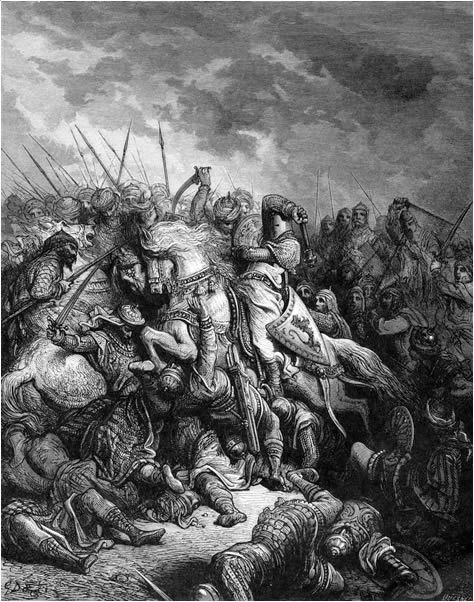
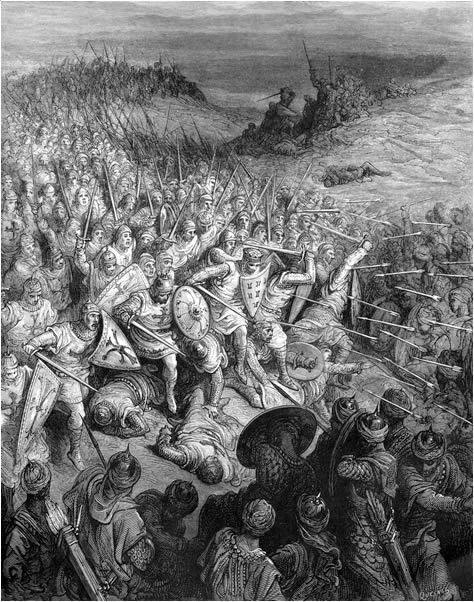
Crusaders hold their ground for seven hours. Facing an almost never-ending army of Turks, Persians, Arabs and others.
Our people were very curious about where such a multitude of Turks, Arabs, Saracens, and others whom I cannot name, had come from. Indeed this excommunicated race filled all the mountains, hills, valleys, and plains on all sides, both inside and outside of the battlefield.
For seven hours the crusaders held their ground. As the casualties began to rise so did the Turkish aggression. When all seemed bleak, Godfrey of Bouillon, Robert II and the fighting-bishop Adhemar of Le Puy arrived with knights and more reinforcements.
The Bishop of Le Puy approached by way of another mountain and thus the unbelieving Turks were surrounded on all sides. Raymond of St-Gilles also fought on the left side. On the right there were Duke Goddfrey, the Count of Flanders (a most valiant knight), and Hugh of France, together with many others whose names I know not.
As soon as our knights arrived, the Turks, Arabs, Saracens, Angulans,32 and all the barbarian tribes speedily took flight through the byways of the mountains and plains. The Turks, Persians, Paulicians, Saracens, Angulans, and other pagans numbered 360, 000, besides the Arabs, whose numbers are known only to God. With extraordinary speed they fled to their tents but were unable to remain there long. Again they took flight and we followed, killing them as we went, for a whole day. We took many spoils: gold, silver, horses, donkeys, camels, sheep, cattle, and many other things of which we know not. Had the Lord not been with us in the battle and had he not suddenly sent us the other force, none of our men would have escaped, for the battle lasted from the third to the ninth hour.
But Almighty God is merciful and kind. He did not allow his troops to perish, nor did he deliver them into the hands of the enemy; rather he sent help to us quickly.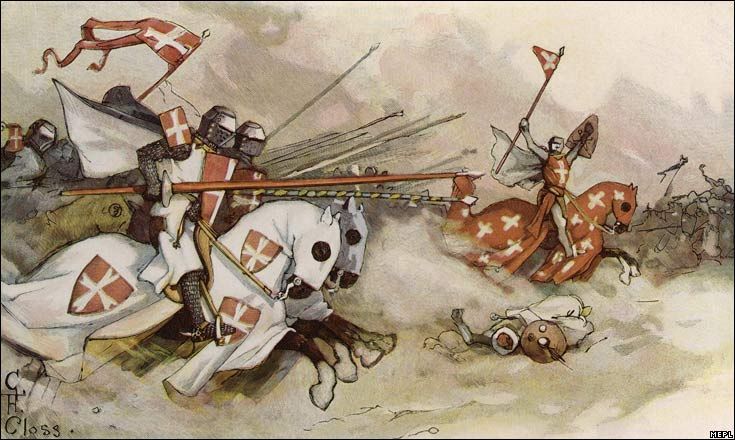
With the Moslem arrows finding it difficult to pierce the knight’s armor they dubbed them as, “Men of Iron”.
The Moslems were soon under the mercy of knights charging on their flanks picking them off. They were also having a difficult time harassing the knights with arrows as they hardly pierced through them. At last to their dismay they found their own camp attacked and set on fire by Adhemar’s men. Kilij Arslan called for a retreat and the battle was over.
Quoted items are from The Crusades: A Documentary History c.1962 (translated material)Last edited by machinecult; 07-28-2012 at 01:11 AM.
-
07-28-2012, 03:01 AM #27
 Re: The Medieval Crusades 1095-1291 - Events, Life, Society, Warfare, Innovations
Re: The Medieval Crusades 1095-1291 - Events, Life, Society, Warfare, Innovations
subscribing to this one..
-
07-29-2012, 10:58 AM #28Banned User

- Join Date
- May 2012
- Gender

- Posts
- 1,464
 Re: The Tafurs: Rabble Army of the Crusades
Re: The Tafurs: Rabble Army of the Crusades
The first crusades brought people from all walks of life driven by several reasons, however there was one factor that united these people and it was the religious fervor to reclaim the land that was taken from them by the ‘infidel’. Peter the Hermit’s peasant army showed us how diverse the first crusaders were during the People’s Crusade. Since then more and more commoners began pouring from Europe led by nobles of lower class, religious fanatics, or among themselves forming bands and hordes – they were given the name ‘tafur’ a name of uncertain origin probably deriving from their leader, a ‘King’ Tafur…
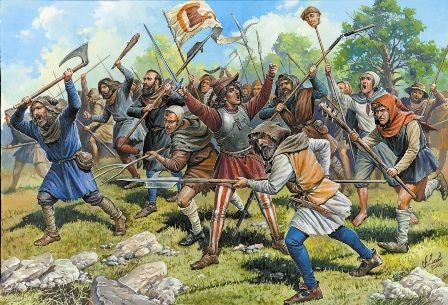
A peasant army. Though unskilled in military discipline and usually armed with simple weapons and virtually with no armor, peasant uprisings were seen as a nuisance across Europe because what they lack in skill and ethics they compensate for their barbarity.
On Tafurs
"The Tafur was used to describe the irregulars that followed the First Crusade. The tafur bands included some of the most undesirable elements of European society – among them were convicted criminals and serial killers, retarded peasants, hermits, and religious fanatics who inspired the rest with tales of great visions they had seen, and saints they had conversed with.>>source: Historum
The ranks of the tafurs included at least as many women as men, including the laundrywomen and ‘ladies of loose morals’ who served the needs of the higher ranking Crusaders. Though the tafurs regularly participated in battles and sieges, they were of little use, often getting under foot as the real soldiers attempted to fight their Seljuk enemies. They were capable of acts of incredible violence and cruelty against Muslim and Christian alike.
The various bands of mercenaries, criminals, peasants, and fanatics that participated in the Crusade were largely responsible for the orgies of looting, raping, and horrific slaughter that followed up the capture of many cities and townships.
With their being irregulars, there was no form of weaponry or armor, let alone clothing or uniforms, unique to the tafurs. Many, perhaps even most of them, had no weapons, either running away or throwing rocks if they were attacked. Some of them, especially those who had been shepherds or hunters at home, used slings and bows, to surprisingly good effect. Others managed to capture the weaponry and armor of Turks who didn’t need them anymore, but very few had any real weapons or armor. Islamic chronicles remark on how filthy and wretched the tafurs looked, unbathed with long, greasy hair and beards, and the clothing nigh rotting off their backs.
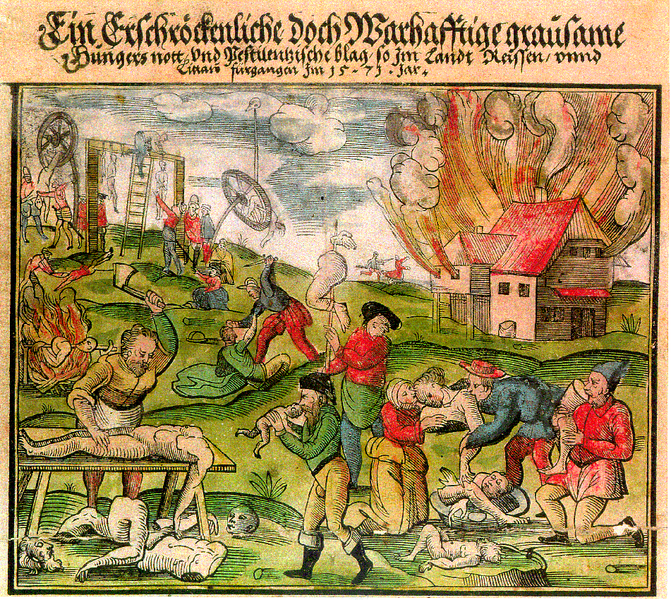
Illustration of Medieval cannibalism that occurred in Lithuania and the Muscovy region (present-day Russia) during great famines. Hunger turn to terror as people began hunting their own as food.
From the Historia Hierosolymitana by the Benedictine monk, theologian and chronicler, Guibert of Nogent
…the Tafurs were well aware that the Muslims feared them because of cannibalism. For that reason, on at least one occasion, the Tafurs publicly “roasted the bruised body of a Turk over a fire as if it were meat for eating, in full view of the Turkish forces.”
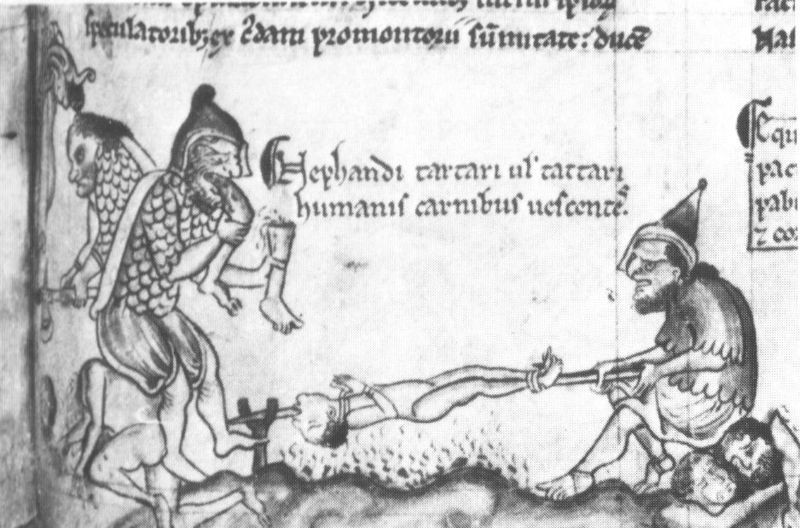 Cannibalism during the Siege of Maa'rat.
Cannibalism during the Siege of Maa'rat.
“I shudder to tell that many of our people, harassed by the madness of excessive hunger, cut pieces from the buttocks of the Saracens already dead there, which they cooked, but when it was not yet roasted enough by the fire, they devoured it with savage mouth.” — Fulcher of Chartres
There appears to be doubting conclusions to the exact description of the Tafurs or the extent of cannibalism among them since other crusaders resorted to cannibalism when famine struck, although with regret for being faced with no other option. It could also be a form of early psychological warfare against the those who were militarily stronger than them; directing both to the Muslim and Christian ranks. It may also be reports from fellow crusaders of noble classes who the Tafurs fought alongside and yet hold prejudiced views towards peasants that neither practice any code or conduct, uneducated simpletons who fought dirty in battle and didn’t adhere to any ethics their fellow noble-warriors, regular soldiers, knights and even their Muslim counterparts hold. These predisposed nature between social classes could also be responsible for creating a terrible reputation for these people as it had been back in Europe; but the disquieting aspect of the Tafurs who ate their victims after defeating them wouldn’t be so easy to digest away.
-
07-29-2012, 01:06 PM #29
 Re: The Medieval Crusades 1095-1291 - Events, Life, Society, Warfare, Innovations
Re: The Medieval Crusades 1095-1291 - Events, Life, Society, Warfare, Innovations
w0w.. it took me and hour to read this one.. subscribing, keep it coming sir.
-
08-25-2012, 09:50 PM #30
 Re: The Medieval Crusades 1095-1291 - Events, Life, Society, Warfare, Innovations
Re: The Medieval Crusades 1095-1291 - Events, Life, Society, Warfare, Innovations
Salaam everyone! Quick question lng. Ngano nagawai man ang Muslims and Christians at the first place? Cause I keep on hearing things about the great crusades and no one bothered to tell why it truly started.

Advertisement
Similar Threads |
|





 Reply With Quote
Reply With Quote

